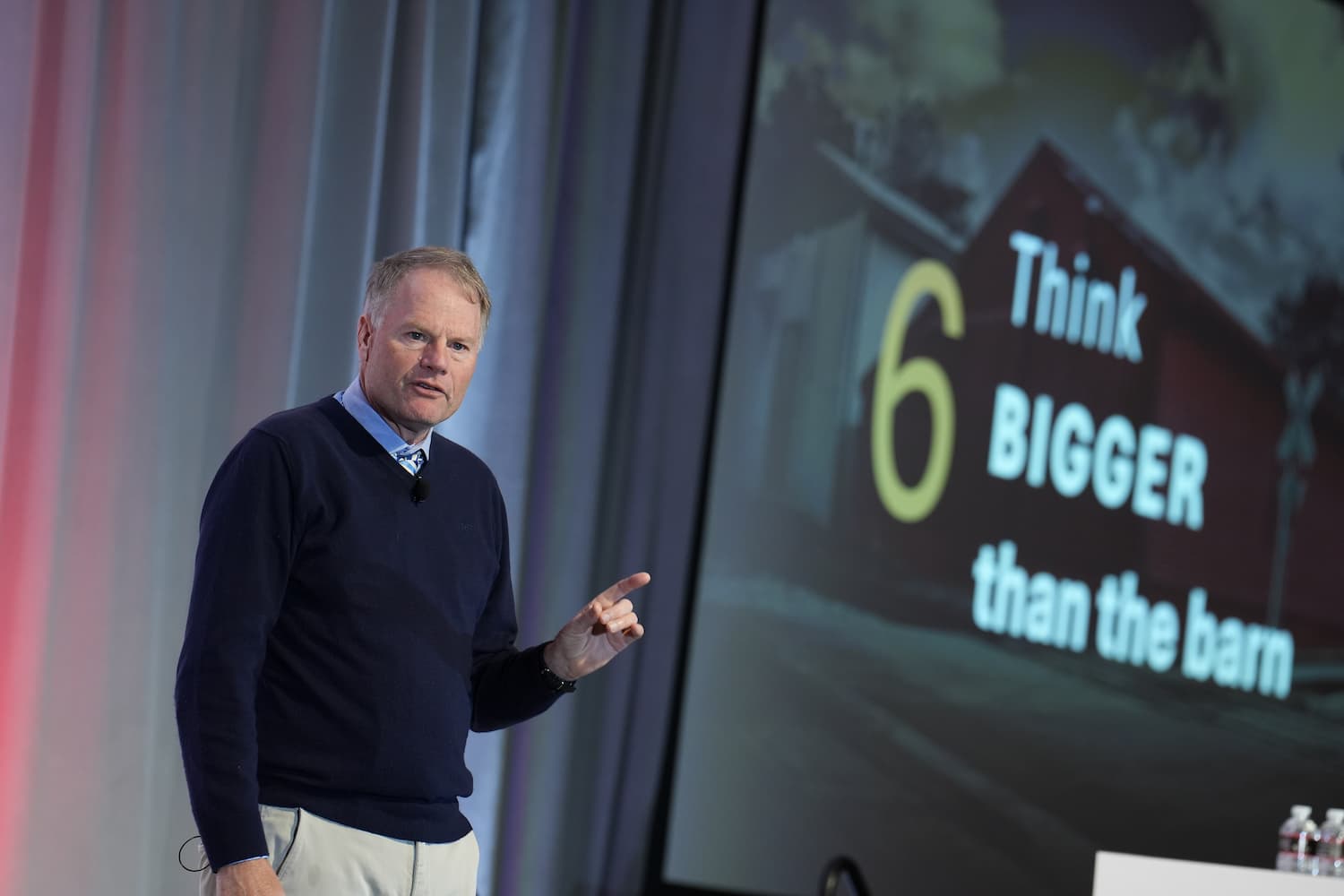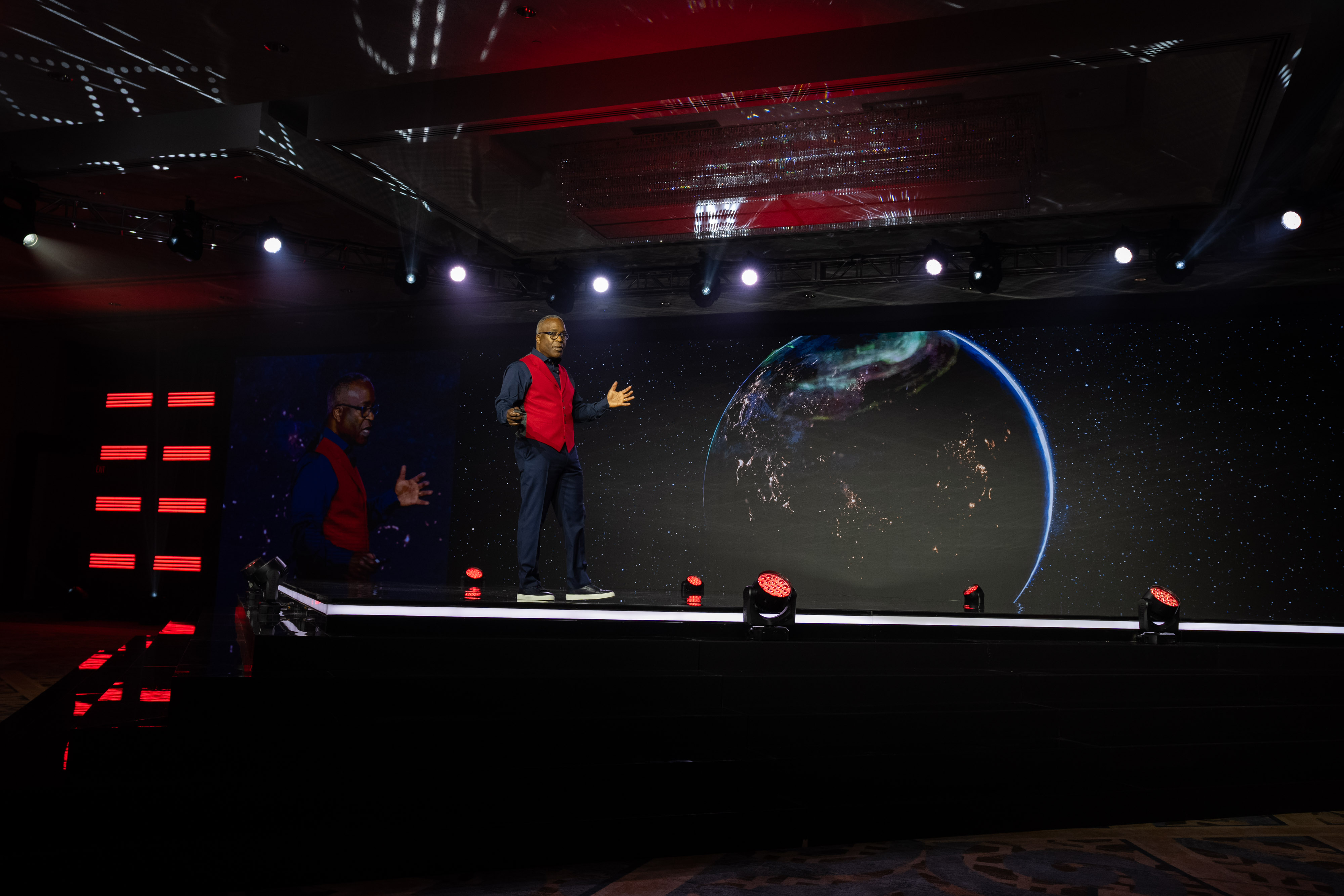CEO John Burke shared his leadership toolbox as part of the Executive Leadership Experience at the For All Summit™ in Las Vegas.
What does it take to create a great workplace experience for employees? It starts with leadership.
For John Burke, CEO of Trek Bicycle, No. 50 on the Fortune 100 Best Companies to Work For® in 2025, the vision for leaders is specific: “I go to work every day to make Trek better,” he shared with an audience of CEOs and HR leaders at the For All Summit.
At Trek, leadership is evaluated by levels, made popular by Stanford professor and author Jim Collins’s “Level 5 Leadership” concept. For Burke, developing great leaders is about solving an existential challenge for Trek.
“I asked ChatGPT about the chances of a company like Trek making it to 100 years,” he says. The company will turn 50 in 2026, but ChatGPT only gave an 8% chance the company makes it another 50 years.
It’s this long-term view that drives Burke to demand excellence from not only leaders, but all employees to build a better company.
“I am cognizant of the fact that I won’t be here,” Burke says of a potential 100-year anniversary for Trek in 2076. “The key is understanding that no company is going to be successful with just one person dominating the company.”
What’s in Trek’s leadership toolbox?
To develop the leadership potential of every employee, Burke recommends five things:
1. A meaningful, relevant mission
Most companies have a mission statement, but too often the words are pablum that fail to meet the current needs of the business. “Ninety-five percent of the mission statements I see are crafted by the marketing department for the marketing department,” Burke says.
At Trek, a reimagined mission statement has been a starting place whenever the business faces headwinds.
Five years prior, the business stalled and Trek’s leaders were forced to ask, “Is our mission still relevant?”
“The test of a mission statement is ‘Does it drive behavior every day?’” Burke says. Trek’s new mission is something Burke regularly calls on when evaluating work or offering feedback to his team.
For example, part of its mission is: “We only build products we love.” A shared commitment to excellence offers an easy way to assess the success of a new bike design or a marketing plan.
2. Create a fleet of sparkling minibuses
The minibus concept is another idea borrowed from Jim Collins who spoke to Trek’s leaders at a 2018 global leadership meeting.
Every Trek employee imagines they are on a minibus, a small team working toward a shared goal. Each minibus is assigned levels, from one to five.
The result? Trek has 750 minibuses, including retail stores, sales territories, manufacturing centers, and marketing departments. Each minibus is empowered to act like owners of the business. They have a flywheel where they understand they’re contributing to company goals. They know the facts about their business unit, both the good and the brutal truth. They have objectives and key results (OKRs), and a scorecard to measure performance.
Each minibus leader is asked to share what they need help with at leadership meetings, and ensuing conversations help everyone grow to create a stronger workplace.
The unique magic of the minibus is how every job becomes meaningful with a clearly stated goal and connection to company performance.
“Every single job is important,” Burke says. The minibus concept ensures that leaders communicate how every single person plays a vital role in company success.
3. Run your play to perfection
This principle is one Burke borrowed from Nick Saban, legendary football coach for the University of Alabama. Saban told Burke how he learned to focus on running each play in a game to perfection, and ignore the score.
It’s a philosophy that provides clarity for a business, Burke says. “It begs the question: What is the play?”
At Trek, the play might be an effort to simplify its product offering, or transform a retail store in Canberra, Australia, into the best bike shop in the world. Running plays turns the work into manageable chunks where teams can have a tangible impact.
4. Develop Level 5 leaders
At Trek, leaders receive a score of one through five, again borrowed from Jim Collins’s book “Good to Great.” Essential elements of Level 5 leaders include humility, will, vision, and the ability to bring the best team to the field.
“Too many people think leaders are born, not made,” Burke says. “Leaders have mentors. Leaders can be coached.”
Trek not only provides its leaders with leadership training, but offers leadership modules to its retail partners. “Who else is going to provide our bike shops with leadership training?” Burke says.
Leaders receive continuous feedback sessions, and every leader is expected to work on their skills.
“I expect everyone at Trek to have a Level 5 journey,” Burke says. If leaders aren’t willing to grow, they won’t be a good fit for the company.
5. Measure leadership with Great Place To Work
How can you measure the performance of your leaders? Trek relies on data from Great Place To Work surveys.
“I can’t tell you how big of an effect Great Place To Work has had on Trek,” Burke says. “You can go leader by leader. The best leaders have the best Great Place To Work scores. The worst leaders have the lowest scores.”
In this way, the Great Place To Work survey is a “fire detector” that offers essential insight into your company. And the impact of a leader is massive. “Leaders have a multiplying impact,” Burke says, “either multiplying positively or multiplying negatively.”
Every leader at Trek has a Great Place To Work objective as part of their OKRs. Every team member is responsible to make their workplace better, resulting in Trek’s jump from No. 94 on the Fortune 100 Best list in 2023 to No. 50 in 2025.
Join the livestream of the 2025 For All Summit mainstage, or join us next year for our premier leadership event.







